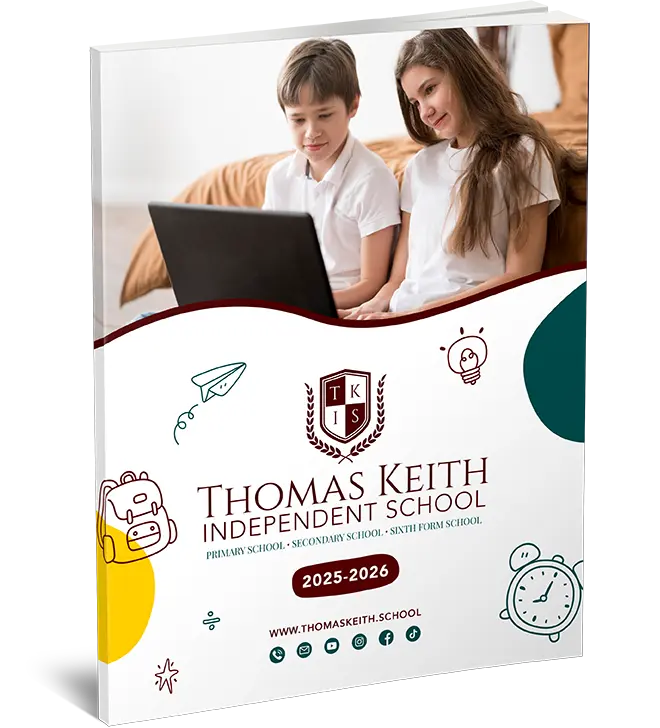Reading is an essential skill in Key Stage 2 (KS2), as it lays the foundation for learning in all subjects. Developing effective reading strategies and comprehension skills ensures pupils understand texts, infer meaning, and apply their knowledge across the curriculum. Without these skills, students may struggle to grasp complex concepts in subjects like science, history, and mathematics. This article explores key strategies that help students develop reading proficiency, provides practical examples, and highlights how schools like Thomas Keith Online Independent School support these skills.

Key Reading Strategies for KS2
Predicting
Predicting is an essential reading strategy, especially before reading a text. By asking students to look at the title, images, or keywords, they are encouraged to think about what the text might be about. Predicting engages the students’ curiosity and provides them with a purpose for reading. It helps them actively focus on reading, which in turn improves their comprehension.
For example, if a student sees the title “The Lost Treasure of the Pirate Ship,” they may predict that the story involves a pirate searching for treasure. This strategy helps set expectations and primes the brain to actively look for clues that confirm or challenge their predictions.
Skimming and Scanning
Both skimming and scanning are quick-reading techniques that can greatly enhance reading efficiency.
- Skimming is the process of reading a text quickly to understand the general idea or main points. It’s useful for getting a quick overview, especially when time is limited.
- Scanning involves searching for specific details or keywords within a text. This is particularly helpful when students are looking for particular facts, names, dates, or pieces of information during comprehension tests or research.
These techniques are particularly useful in a classroom setting when students need to read long passages or find specific information quickly. For instance, when answering comprehension questions, students can use scanning to locate the part of the text where the answer is found.
Questioning
Questioning is a powerful strategy that encourages active reading. Pupils should ask themselves questions while they read, such as: “What is happening in this part of the story?” or “Why did this character make that decision?” This strategy fosters a deeper understanding of the text and encourages critical thinking.
For example, in a story where a character makes an unexpected choice, asking questions like “What motivated this choice?” or “How did this affect the story’s outcome?” helps students reflect on the character’s motives and understand the story on a deeper level.
Visualising
Visualising is one of the most engaging reading strategies, as it asks students to create mental images of the scenes, characters, and events described in the text. This strategy helps students become more immersed in the material and can improve both memory and comprehension.
For example, when reading a description of a dark, spooky forest, students should be encouraged to picture the trees, the shadows, and the sounds. This mental image helps solidify the concepts described in the text and improves overall comprehension. Visualising adds an element of fun to reading and can turn the text into an adventure.
Summarising
Summarising is a critical skill that helps students distil the essential ideas from a text. After reading, pupils should be able to rephrase the main points in their own words. This helps reinforce the information and ensures they truly understand the material.
For example, after reading a story, a student might summarise the key events: “A young boy finds a mysterious key, unlocks an ancient door, and discovers a treasure map. He sets off on an adventure to find the treasure.” Summarising helps students focus on the most important parts of the text, making it easier for them to retain and recall the information.
Core Comprehension Skills for KS2
Understanding Vocabulary
A crucial part of reading comprehension is understanding vocabulary in context. Students need to know how to figure out the meaning of unfamiliar words by looking at the surrounding text. Teachers often encourage students to guess the meaning of a word based on its context or use context clues, such as synonyms or antonyms, to help decipher the meaning.
For example, if a student encounters the word “swooped,” they can infer its meaning from the sentence, “The bird swooped down to catch its prey.” By understanding the surrounding words, students can deduce that “swooped” means to dive quickly or suddenly.
Inference
Inference involves going beyond what is explicitly stated in the text to understand deeper meanings or ideas. Students need to read between the lines to infer characters’ feelings, motivations, or potential outcomes based on the text’s clues.
For example, if a character in a story says, “I’m fine,” but their actions suggest they are slumped and silent, a student could infer that the character might be upset. Inference helps students develop critical thinking and interpret texts more thoroughly.
Retrieval
Retrieving information from the text is an important part of comprehension. Students practice looking for specific facts, events, or details from the text to answer direct questions. This skill ensures that students can locate and recall information accurately.
For example, after reading a passage, a student might be asked, “What colour was the car that the character drove?” Retrieval skills help students find and recall precise information quickly, which is useful for both academic assessments and general reading tasks.
Making Connections
Making connections helps students relate what they read to their own lives, other texts, or world knowledge. By linking new information to something familiar, students can deepen their understanding and make the reading experience more meaningful.
For example, after reading about a character who is struggling with making friends, a student might connect this to their own experiences with friendship. This connection can enhance empathy and understanding, making the text more personal and relatable.
Evaluating
Evaluation requires students to form opinions about the text. After reading, they might discuss whether they agree with a character’s choices or how effective they think the author’s message is. This helps students develop critical thinking and evaluate texts more thoughtfully.
For example, after reading a story with a character who makes a difficult decision, students might discuss whether the character’s choice was justified and explain why they agree or disagree. Evaluating texts encourages independent thinking and fosters deeper comprehension.
How Thomas Keith Online Independent School Supports Reading Skills
Thomas Keith Online Independent School integrates these reading strategies and comprehension skills into its curriculum to ensure KS2 students thrive. The school provides a range of resources and strategies that support students at all levels, ensuring they develop a strong foundation in reading.
The school’s approach includes:
- Interactive Reading Platforms: Students access online books, with activities designed to help them practice predicting, summarising, and questioning.
- Personalised Lessons: Teachers tailor reading sessions to each student’s individual needs, ensuring that each child builds strong comprehension skills at their own pace.
- Regular Assessments: Weekly comprehension tasks track student progress, allowing teachers to identify areas for improvement and offer targeted support.
- Engaging Resources: Multimedia resources, such as videos and animations, are used to make reading interactive and enjoyable, keeping students engaged while learning essential skills.

FAQs
Q1: What are the most important reading strategies for KS2?
A1: The key strategies for KS2 students are predicting, skimming, scanning, questioning, visualising, and summarising. These strategies help improve reading comprehension and engagement.
Q2: How can I help my child improve comprehension skills at home?
A2: Reading with your child regularly, discussing the text, encouraging them to ask questions, and summarising the main points are great ways to improve comprehension skills at home.
Q3: What resources does Thomas Keith Online Independent School offer for reading?
A3: Thomas Keith offers interactive platforms, personalised lessons, and engaging multimedia resources to support reading and comprehension development.
Q4: Why are comprehension skills important in KS2?
A4: Strong comprehension skills are essential for understanding texts, answering questions accurately, and succeeding in subjects like English, science, and history.
Conclusion
Reading strategies and comprehension skills in KS2 are vital for academic success. By developing strategies such as predicting, summarising, and inferring, students enhance their ability to understand and engage with texts. Schools like Thomas Keith Online Independent School provide tailored support, ensuring students develop these essential skills effectively. Through consistent practice and engaging lessons, students can gain confidence in their reading and overall learning journey.




